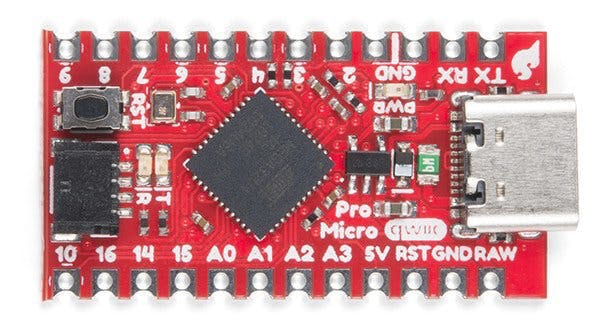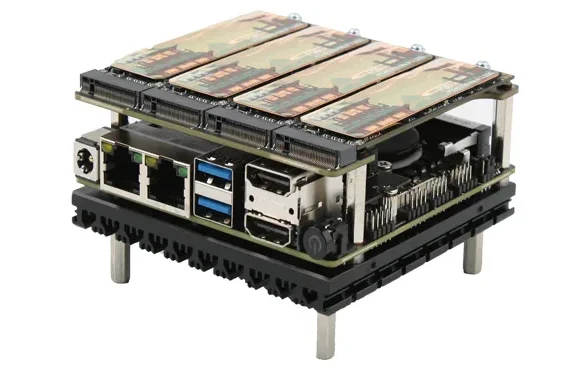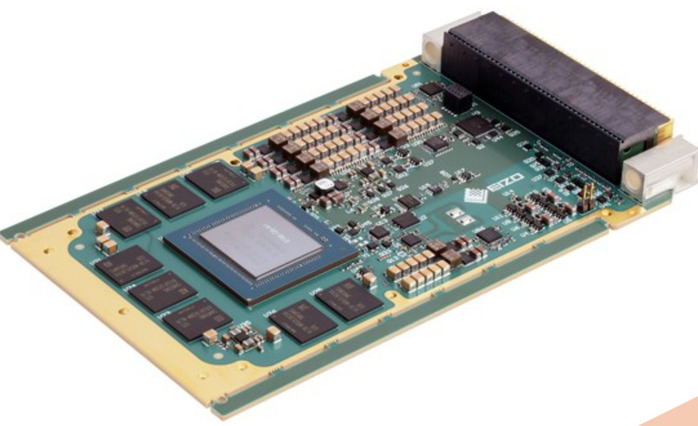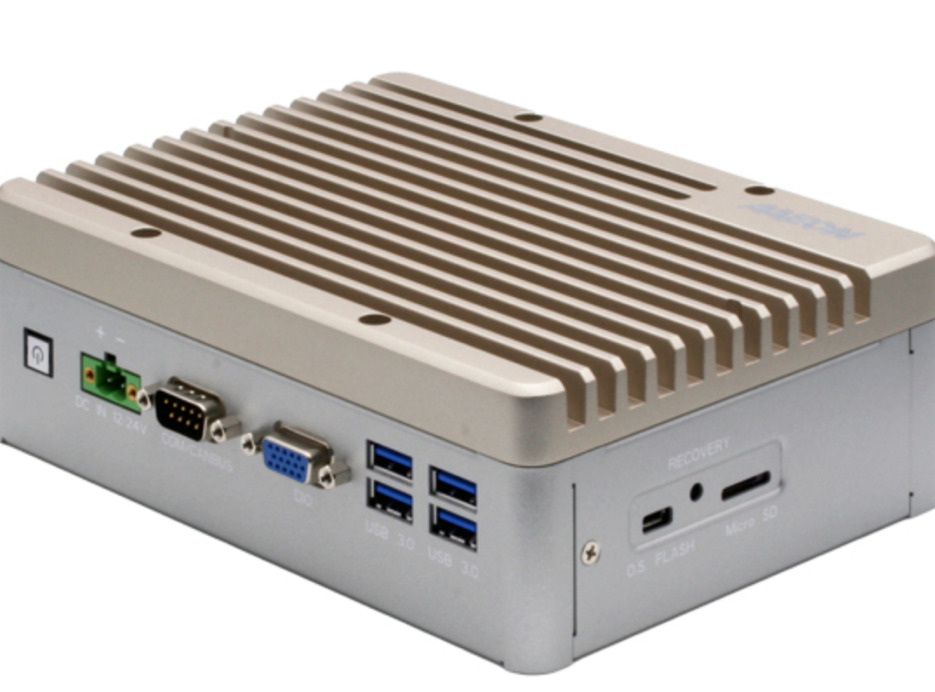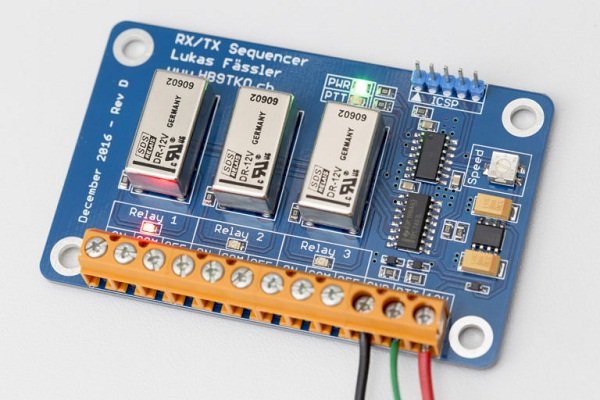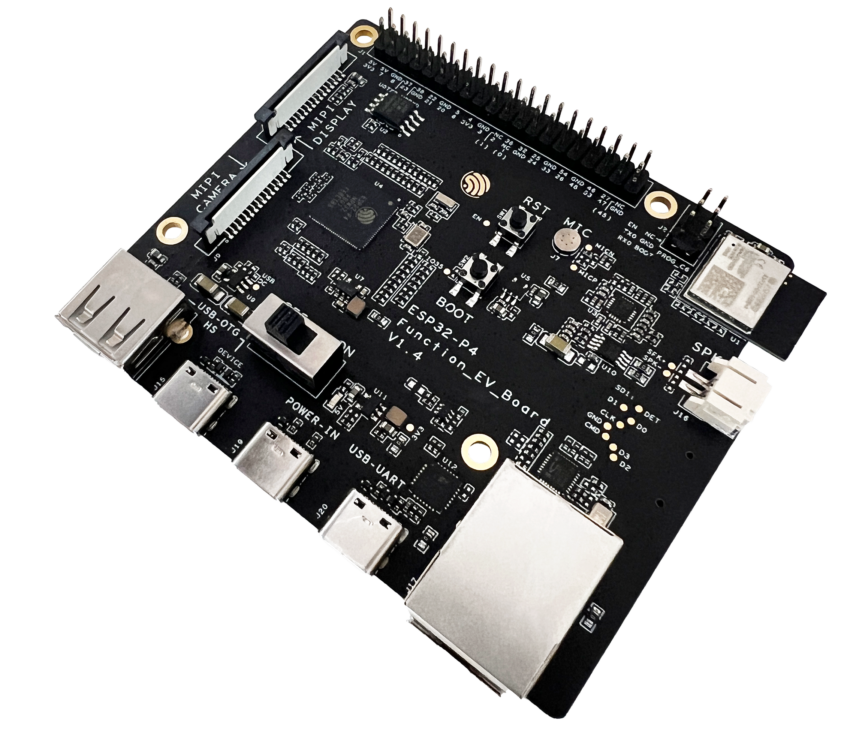
ESP32-P4-Function-EV-Board: Dual-core RISC-V Processor with ESP32-C6-MINI-1, ES8311 Audio Codec, and H.264 Encoder
The ESP32-P4-Function-EV-Board is a multimedia development board centered around the ESP32-P4 chip, which features a dual-core 400 MHz RISC-V processor and supports up to 32 MB PSRAM. Designed for low-cost, high-performance audio and video applications with low power consumption, the board offers key interfaces such as USB 2.0, MIPI-CSI/DSI, and an H.264 encoder to handle multimedia tasks.
For wireless connectivity, the board includes the ESP32-C6-MINI-1 module, which supports 2.4 GHz Wi-Fi 6 and Bluetooth 5 (LE). It also integrates a 7-inch capacitive touch display with a 1024 x 600 resolution and a 2MP camera with MIPI CSI, enhancing its interactive capabilities. Additionally, it features an RJ45 Ethernet port with 10/100 Mbps speeds, connected via an RMII interface to an Ethernet PHY chip.
Previously, we covered the ESP32-C6-Pico and ePulse Feather C6, both of which are ESP32-C6 development boards. These boards offer multiple GPIO pins along with Wi-Fi and Bluetooth connectivity. Feel free to check them out if you’re interested in these products.
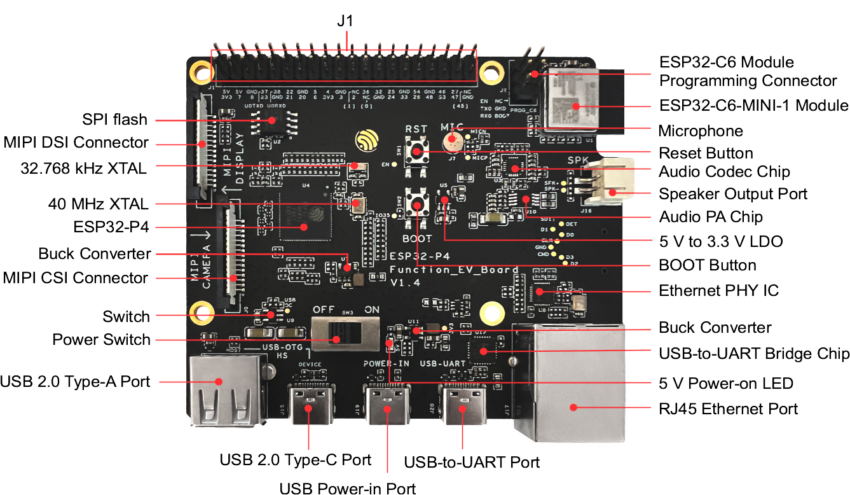
The ESP32-P4-Function-EV-Board specifications:
- Processor: ESP32-P4 chip with dual-core 400 MHz RISC-V processor
- Memory: Supports up to 32 MB PSRAM
- Storage
- 16 MB SPI flash for storage
- microSD card slot (4-bit mode)
- Multimedia:
- 7-inch capacitive touch display (1024 x 600 resolution)
- 2 MP camera with MIPI CSI interface
- H.264 hardware encoder for video applications
- MIPI DSI connector for display interface
- Audio:
- ES8311 low-power mono audio codec (I2S and I2C interfaces)
- NS4150B 3W mono Class D audio amplifier
- Onboard microphone and speaker output port (supports 4 Ω, 3W speakers)
- Networking:
- Wireless: 2.4 GHz Wi-Fi 6 & Bluetooth 5 (LE) via ESP32-C6-MINI-1 module
- RJ45 Ethernet port with 10/100 Mbps support (RMII interface)
- USB:
- USB 2.0 Type-C port (OTG support, host/device mode)
- USB 2.0 Type-A port (supports up to 500 mA current)
- USB-to-UART bridge (CP2102N) for debugging and firmware download
- Expansion and Peripherals:
- 40-pin header for GPIO, 5V, 3.3V and GND
- Multiple FPC connectors for external camera and display modules
- Other Features:
- Reset and BOOT buttons for firmware programming
- 40 MHz and 32.768 kHz crystal oscillators
- Power-on LED, power switch, and TPS2051C USB power switch
- Power:
- 5v DC-in with multiple power options via USB Type-C, USB Power-in, and USB-to-UART ports
- 5V to 3.3V LDO regulator and buck DC-DC converter
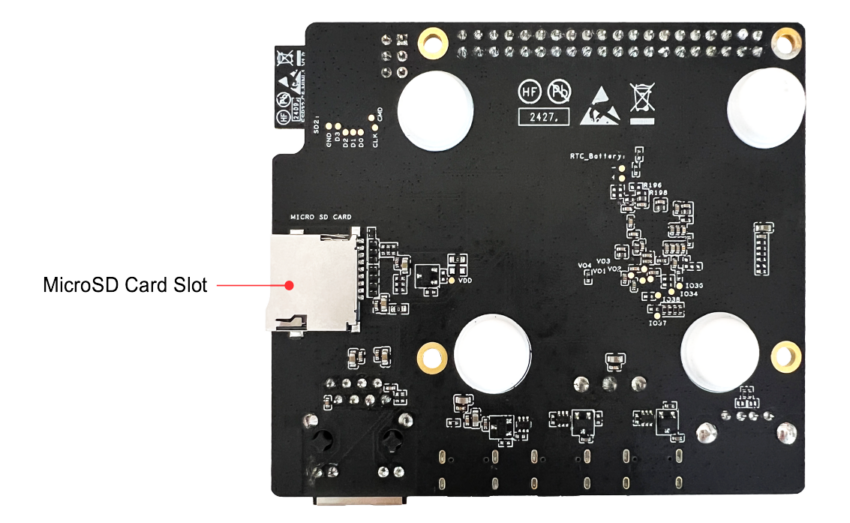
To connect the camera, use the forward-facing ribbon cable to attach the camera adapter board to the MIPI CSI connector on the development board. If you’re powering the LCD adapter board with a USB cable connected to its J1 header, there’s no need to connect the 5V and GND pins to the development board. This setup works with Windows, Linux, or macOS. You can find demo code and additional technical documentation in their GitHub repository.
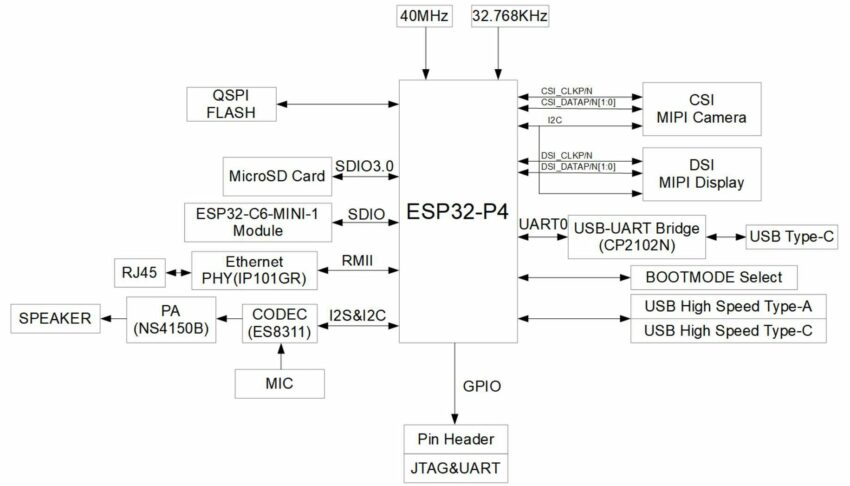
This development board is ideal for prototyping a range of products, including visual doorbells, network cameras, smart home control systems, and vehicle dashboards, which require networked audio and video functionality.
The ESP32-P4-Function-EV-Board is available on AliExpress for $55.44, with $3.98 shipping within the USA. For more details, check out the product page and documentation.






